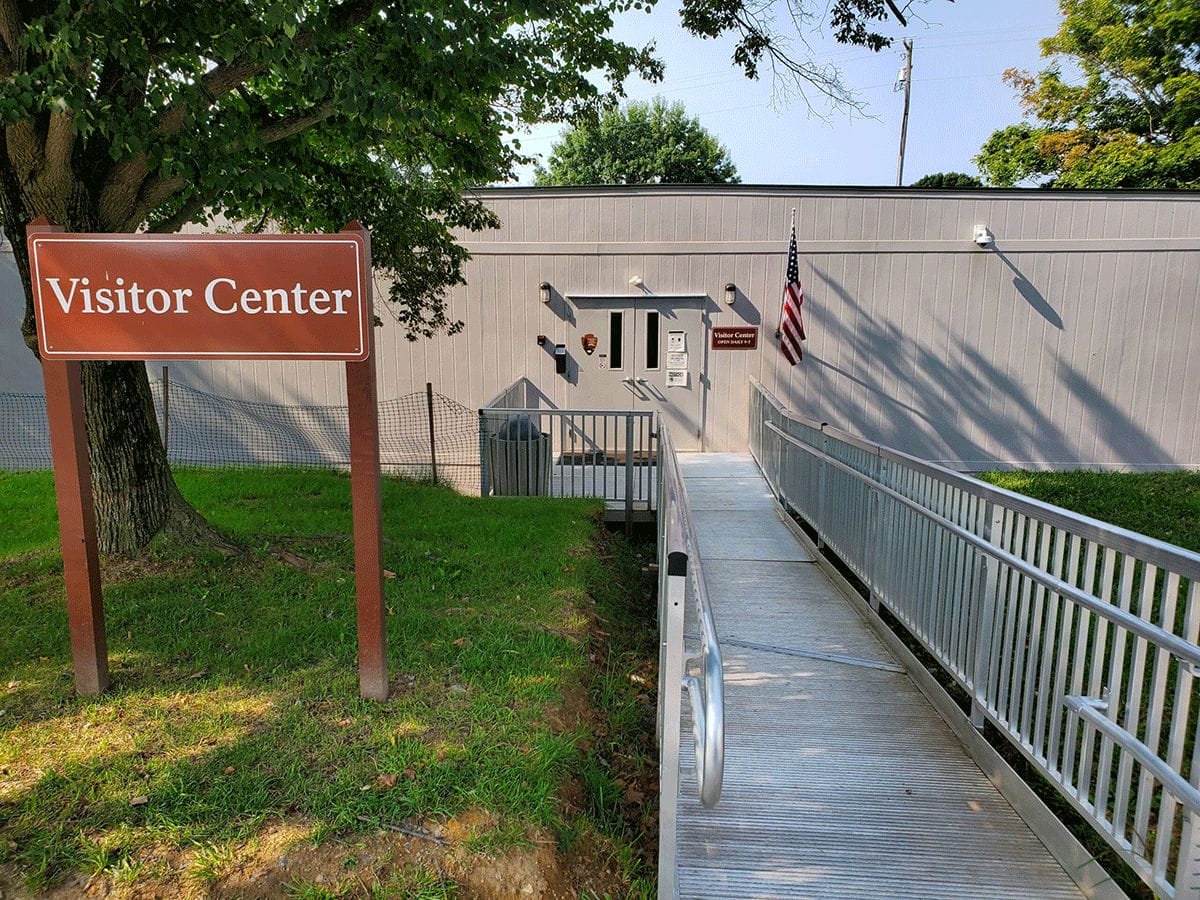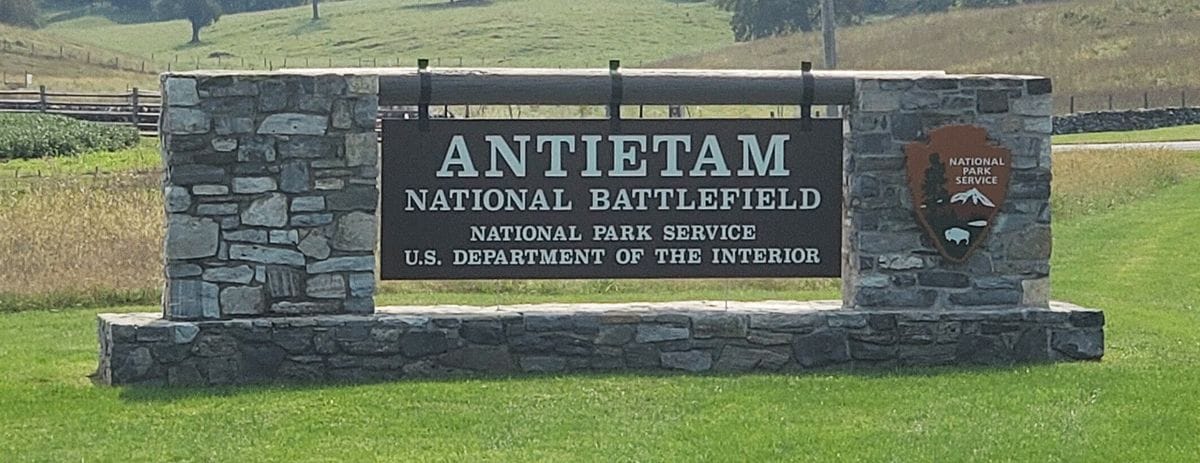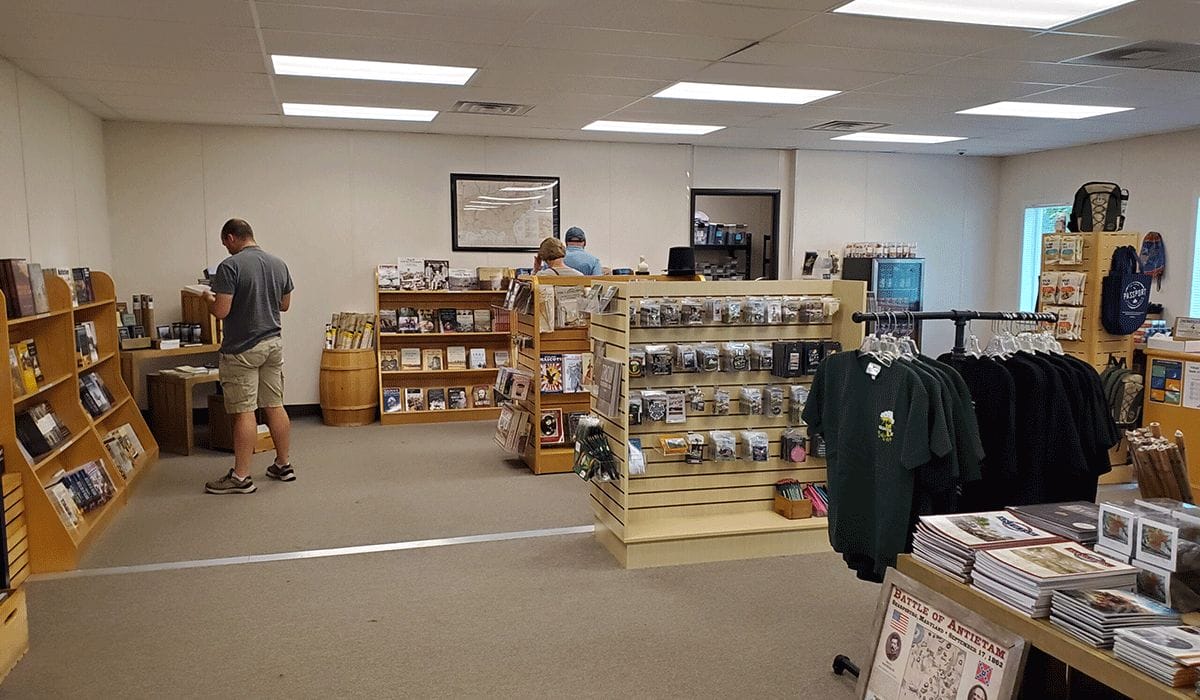Temporary Visitors Center at Antietam National Battlefield Park
Project Overview
In collaboration with a leading General Contractor, USMGE undertook the construction of a temporary modular visitors center at Antietam National Battlefield Park. This initiative was aimed at facilitating visitor engagement during the renovation phase of the existing Visitors Center. USMGE’s contribution involved the provision of a comprehensive 5,000 square foot modular building, built by Titan Modular Systems, tailored to accommodate diverse functionalities.
This phase-one project spanned over two years, featuring essential facilities such as retail space, film rooms, exhibit rooms, an information center, and restrooms. Upon the completion of the renovation phase, these modular buildings were strategically relocated to a permanent site in Frederick, MD, situated within another US Park Service facility.
This relocation served the purpose of promoting education and training, aligning with USMGE’s commitment to repurposing and extending the functionality of these structures beyond their initial deployment at Antietam National Battlefield Park. This innovative approach not only addressed immediate visitor needs during renovations but also contributed to broader educational initiatives in a different park setting.
Challenges and Goals
Antietam National Battlefield Park, a revered site listed on the U.S. National Register of Historic Places, presented unique challenges demanding meticulous preservation efforts. The paramount goal was to ensure minimal disruption to the sacred grounds surrounding the new modular building. Given this imperative, modular construction emerged as an ideal solution, as the bulk of the construction occurred off-site, significantly reducing disturbance to the historical site. However, the project encountered further complexities during the relocation phase, necessitating additional care and attention.
The tear-down, transportation, and site restoration process at the initial location demanded meticulous handling to preserve the integrity of the hallowed ground. Moreover, the relocation to a new site mandated similar meticulous care requirements to uphold the historical significance and environmental considerations,
Sustainability Approach
Throughout the conception and execution of the modular visitors center project at Antietam National Battlefield Park, sustainability remained a pivotal consideration. USMGE’s commitment to sustainability extended beyond the immediate construction phase. The utilization of modular construction inherently minimized environmental impact by optimizing resources and reducing on-site disturbance, aligning with eco-friendly practices. Furthermore, the strategic relocation of these modular buildings to a new site in Frederick, MD, exemplified a sustainable approach.
This repurposing initiative showcased a dedication to extending the lifecycle of structures, reducing waste, and fostering educational opportunities within a different park setting. The careful planning involved in the tear-down, transportation, and restoration processes not only preserved historical integrity but also underscored a commitment to environmental stewardship. By seamlessly integrating sustainability into both construction and relocation phases, the project showcased USMGE’s holistic approach to preserving heritage sites while promoting long-term environmental responsibility and educational outreach.
More from Modular Advantage
Samantha Taylor: Leading the (Modular) Design of Tomorrow
“With modern technology and the way we’ve all embraced things like BIM, file sharing, and video conferencing since COVID, it’s easy to collaborate with companies in Austria, or Singapore, or anywhere else in the world.”
Greg DeLeon: Military Engineering to Modular Design
Greg DeLeon, a structural engineer at ISE Structural Engineers in Temecula, California, can tell you not only how large a beam needs to be to support a house, but also how much explosives you’ll need to take it down, thanks to his unique combination of professional and military experience.
To Remake North Minneapolis, Devean George Swaps Basketball for Buildings
He’s lived in Los Angeles, Dallas, and San Francisco (to name a few). He’s delivered championships with the Los Angeles Lakers and made career-defining moves with the Dallas Mavericks and the Golden State Warriors. No matter the wins, the championships, or even the seemingly impossible 3-pointers, Devean George has always returned to where it all started for him: Minneapolis.
Chelsi Tryon: Making the World a Better Place
For Chelsi Tryon, Director of Environmental, Social, and Governance (ESG) for WillScot Mobile Mini, nothing is more enjoyable than increasing the
company’s sustainability efforts while simultaneously doing her bit to save the environment.
Joshua Hart: Pushing Boundaries
Joshua Hart, P.E., vice president at Modular
Solutions, can sum up his job responsibilities in one sentence: “I do whatever needs to be done.” Hart thrives on the variety and the opportunity to be involved in every aspect of the company. And it shows! You might say Hart has come full circle.
Jamie Metzger: From Construction to Apparel and Back Again
Growing up in a blue-collar city like Edmonton, Alberta, Canada, it’s no surprise that Jamie Metzger spent some time working labor jobs on construction sites. It’s one of the most common summer jobs in the city. But that’s probably the last predictable thing about this particular story.
Victor Masso: Expanding Modular in Puerto Rico
Victor Masso joined 2 Go Storage, a company started by his grandfather and father, in 2018 to develop a modular building division in the wake of the devastation caused by Hurricane Maria in 2017. Prior to joining the company, he had worked in the industry for about four years focusing on pharmaceutical, commercial, and government projects.
Eliyah Ryals: Finding the Perfect Fit
It’s not common for people to find their perfect career fit straight out of college. It’s even less common to find it in the town you grew up in. But that’s exactly what happened when Eliyah Ryals was told about vacancies at Panel Built and made the decision to apply.
Through It All, It’s Still About the Workers
By February 2024, the number of available, unfilled construction job openings had reached an all-time high. At some point, interest rates will fall, creating another surge in demand for such workers. In short, solving the nation’s skilled worker shortage issue has never been more important.
Navigating Insurance Challenges in the Modular Construction Industry
Utilizing practical written minimum insurance and indemnity requirements, along with monitoring certificates of insurance by someone who has COI training will not yield a perfect risk transfer strategy, but the exposure will be managed much better than it likely is currently.















